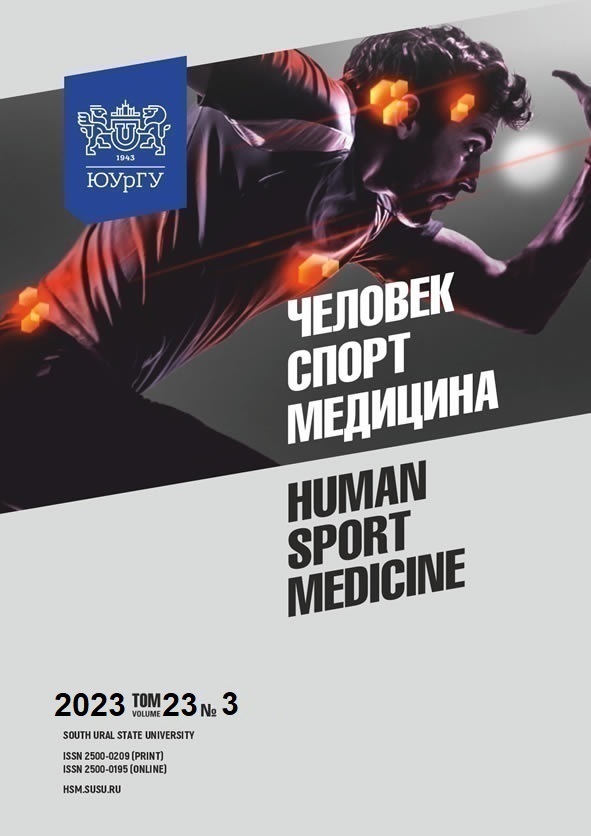NEURODYNAMIC AND PSYCHODYNAMIC FEATURES OF TUVA MALES WITH DIFFERENT PHYSICAL ACTIVITY LEVELS
Abstract
Aim. This paper aims to identify the neurodynamic and psychodynamic features of Tuva males with different physical activity levels and sports specializations. Materials and methods. The study involved 164 Tuva males aged 17 to 21 years. Hand-eye coordination, response to a moving object, neuroticism, temperament features, and tempo/rhythm perception (the tapping test) were evaluated with the NS-PsychoTest system (Neurosoft, Ivanovo, Russia). Results. Young males involved in general physical training, volleyball, and wrestling were characterized by an imbalanced nervous system with a predominance of excitation and well-developed motor skills in the dominant hand. In volleyball players and wrestlers, the nervous system was considered moderate to weak, while a moderate nervous system characterized males in the general training group. Volleyball players were considered ambiverts, while all the rest were introverts. The majority of males were characterized by a moderate excitation level, except for males from the general training group, who had a low level of emotional stability. Conclusion. The data obtained showed a relatively low level of differences in the control group, an average one in volleyball players and wrestlers, and the highest one in the general training group.
References
References on translit
Copyright (c) 2023 Human. Sport. Medicine

This work is licensed under a Creative Commons Attribution-NonCommercial-NoDerivatives 4.0 International License.















